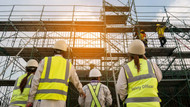OHS Professionals vs. WHS Duty Holders
Occupational Health and Safety professionals are experts in health and safety, ensuring that workplaces are safe for employees. Workplace Health and Safety (WHS) is the regulatory term for OHS in most of Australia.
The difference between a professional and a duty holder is that OHS professionals provide expert advice. In contrast, a duty holder is anyone who has obligations under WHS legislation with which they need to comply.
According to the Worker Representation and Participation Guide, duty holders and professionals are individuals who "provide for fair and effective workplace representation, consultation, co-operation and issue resolution concerning work health and safety."
WHS duty holders are people who have specific duties under the Work Health and Safety Act, including:
- Employers or CEOs
- Managers and Supervisors
- Workers or Work Groups
- Persons Conducting a Business or Undertaking (PCBU)
WHS Professionals are people who have the necessary skills, knowledge, and experience to carry out their work health and safety duties. They include:
- Health and Safety Representatives (HSRs)
- Health and Safety Committee (HSC)
- Workplace Health and Safety Officers (WHSOs)
They may also include:
- Safety consultants
- Safety auditors
- Safety inspectors
- WHS advisors
- Risk managers
- Ergonomists
- Occupational hygienists
- Physiotherapists
They both make sure to minimise hazards in the workplace. WHS professionals develop and implement health and safety policies and procedures. They also manage the training of employees on how to work in their environment safely.
Person Conducting a Business or Undertaking (PCBU)
"A person conducting a business or undertaking (PCBU) has a primary duty of care to ensure, so far as is reasonably practicable, the health and safety of workers." This means taking all necessary steps to protect workers from possible health and safety hazards that may occur while working.
In determining what is reasonably practicable, a PCBU must consider a range of factors, including:
- the nature and degree of the risk
- the available technology and methods for eliminating or minimising the risk
- the cost of implementing measures to control the risk
- whether the action would be effective in preventing the risk.
Persons may mean one or more than one individual. A PCBU can mean:
- a corporation
- the Commonwealth
- a state or territory
- an individual who carries out business undertakings
- a corporate body
- a contractor at a workplace.
Health and Safety Representatives
A health and safety representative is one of the most influential regarding health and safety at work. This person is elected or appointed by their co-workers to represent them in matters relating to health and safety.
Safe Work Australia defines health and safety representatives as "workers elected to represent the health and safety interests of workers." Safety representatives play a role in maintaining healthy and safe working conditions by identifying and resolving concerns. They work with management to ensure that the workplace is safe and that workers know their health and safety rights and responsibilities.

Election of Health and Safety Representatives
The law doesn't require businesses and organisation to have HSRs, but they're needed if work groups request to have them. Workgroups and Persons Conducting a Business and Undertaking (PCBUs) decide how the election for HSR will commence.
Work groups are groups of workers that are formed to elect a representative to speak for them. An election is unnecessary if the number of nominees is equal to the vacancies of the HSRs position.
They may conduct elections with the assistance of a union or other organisation if most workers agree. The PCBU must provide the resources, facilities, and services required for the polls. It is the responsibility of the PCBUs to ensure that the elections are fair and correct.
PCBU Duties
The PCBU must provide a healthy and safe workplace. However, HSRs have an essential role in representing members of their work group and raising issues to the attention of the PCBU.
The following are the powers and responsibilities of HSRs:
- representing and consulting with their work group on health and safety matters
- investigating work, health, and safety (WHS) concerns
- seeking out WHS information for developing strategies for mitigating risks
- issuing a provisional improvement notice (PIN)
- directing unsafe work to cease
- monitoring the PCBU's response to a provisional improvement notice (PIN)
- inspecting their workplace at any time
- promoting a positive health and safety culture in their workplace
- request for establishing a health and safety committee (HSC).
All PCBUs are obliged to support HSRs in their WHS roles which include:
- consulting with HSRs on WHS matters
- allowing them access to information on hazards at the workplace
- providing resources and facilities to perform their functions
- ensuring they are not disadvantaged for taking on the role and permitting them to accompany an inspector during an inspection.
HSR Training
HSRs are entitled to undertake approved training to help them perform their duties. The content of HSR training courses must cover the following:
- the role, powers, and functions of an HSR under the model WHS laws
- how to identify and assess risks and control measures in consultation with others
- investigation processes
- effective workplace consultation, including how to represent workers' views
- the role of health and safety committees
- procedures for issuing improvement notices and directing unsafe work to cease.
Health and Safety committees (HSC)
Another obligation of a PCBU is to consult with workers about health and safety risks and opportunities for improvement. One way to do this is by establishing a health and safety committee (HSC).
A HSC is a more formal way to consult on health and safety matters. It provides an opportunity for the PCBU and workers to discuss and develop ways to improve health and safety at work.
A HSC must conduct a meeting at least once every three months. But, if members request, the HSC can meet more often. The members should consider how often the committee should meet when deciding on the following:
- how much work the HSC has to do
- where is the location of the workplace
- how many workers are at the workplace, and what they do
- what kind of hazards are at the workplace.
Safety committees are formed when two or more employers operating at the same workplace agree to form a committee or an inspector directs a worker to establish one. The safety committee should consist of equal numbers of management and worker representatives. The number of members will depend on the size of the organisation.
Roles and Responsibilities of an HSC
A health and safety committee (HSC) aims to promote a safe and healthy work environment through:
- developing and implementing health and safety standards, rules and procedures
- identifying potential hazards and developing control measures to mitigate risks
- providing valuable feedback to employers on the effectiveness of health and safety measures
- promoting communication and co-operation between workers and employers.
Workplace Health and Safety Officers (WHSOs)
A safety officer is responsible for leading a proactive approach of a business to meet its WHS duties. The management of the organisation appoints safety officers to support HSRs. An officer is someone who makes or participates in making essential decisions for a company. He can significantly affect the company's financial situation.
HSR is the person who speaks for the workers on health and safety issues. While a Safety Officer is someone from management who helps ensure everyone follows safety procedures in the workplace.

Roles and Responsibilities
The responsibility of the WHS officer is to ensure that the business meets all its workplace health and safety duties. They include:
- ensuring that safe work systems are in place to protect workers from harm
- determining if the WHS measures in place are effective or not
- making decisions on money and resources that allow the business to implement WHS measures.
Other WHS Professionals
OHS Professionals can help you with a range of things, such as:
- reviewing your health and safety systems
- assessing risks and developing control measures
- conducting safety audits
- developing and delivering health and safety training
- providing expert advice on a range of health and safety topics.
Aside from HSRs, HSCs, and WHSO, there are other health and safety roles in the workplace. They include:
- WHS consultants - experts who provide advice to businesses on how to comply with workplace health and safety laws. Companies hire them to provide expert knowledge and advice about safety procedures and protocols.
- Safety auditors - are responsible for conducting audits of an organisation's health and safety management system to identify any strengths and opportunities for improvement to the system.
- Safety inspectors - are usually government agents authorised to enter workplaces to investigate complaints and conduct audits of workplaces, machines, or equipment. They ensure government rules, regulations, and industry standards regarding occupational health and safety compliance.
- Occupational hygienists - are trained professionals who specialise in assessing and managing risks to human health. They identify health hazards and develop and implement strategies to mitigate them.
- Ergonomists - study people's efficiency in their work environments and design or modifies work to fit the worker. Their aim is to eliminate discomfort and risk of injury due to work. They consider the worker's physical limitations and capabilities and the nature of the work.
- Risk Managers are responsible for developing and implementing an organisation's risk management policies and procedures. They work with senior management to identify and assess risks, develop risk mitigation plans, and monitor controls.
- Floor wardens - are responsible for coordinating evacuation procedures during an emergency.
- First aiders - have received training in first aid and can provide primary medical care (e.g., CPR) until more advanced medical help arrives.
Perform Your Roles and Responsibilities Readily with SafetyDocs
If you're part of an organisation, you must perform your roles and responsibilities to the best of your ability. Each one in the workplace plays an integral part in keeping a workplace safe. By working together, they can create a comprehensive safety plan that covers all bases and protects everyone in the workplace.
Whatever your duty of care is in maintaining workplace health and safety, SafetyDocs by SafetyCulture is your best ally. With our comprehensive range of safety documents, you can readily fulfil your roles and responsibilities in health and safety. We have ready-made Safe Work Method Statement (SWMS), Safe Operating Procedure (SOP), management systems, and management plan customisable templates.
Our safety documents will help you to do the following responsibility efficiently:
- identify hazards and assess risks
- develop control measures
- monitor controls
- communicate information about risks and control measures
You can start by checking out the following templates to get started:
- Legislation and Codes of Practice Reference List
- OHS/WHS Management Systems
- Checklists, Forms & Registers
- Free SWMS Template
Get the proper documentation for your needs and be on your way to fulfilling your health and safety responsibilities today with SafetyDocs. Contact us to learn more.
Available for instant download and supplied in fully editable MS Word format for use in your business.
Please note that the above information is provided as a comment only and should not be relied on as professional, legal or financial advice.
Share This Article
